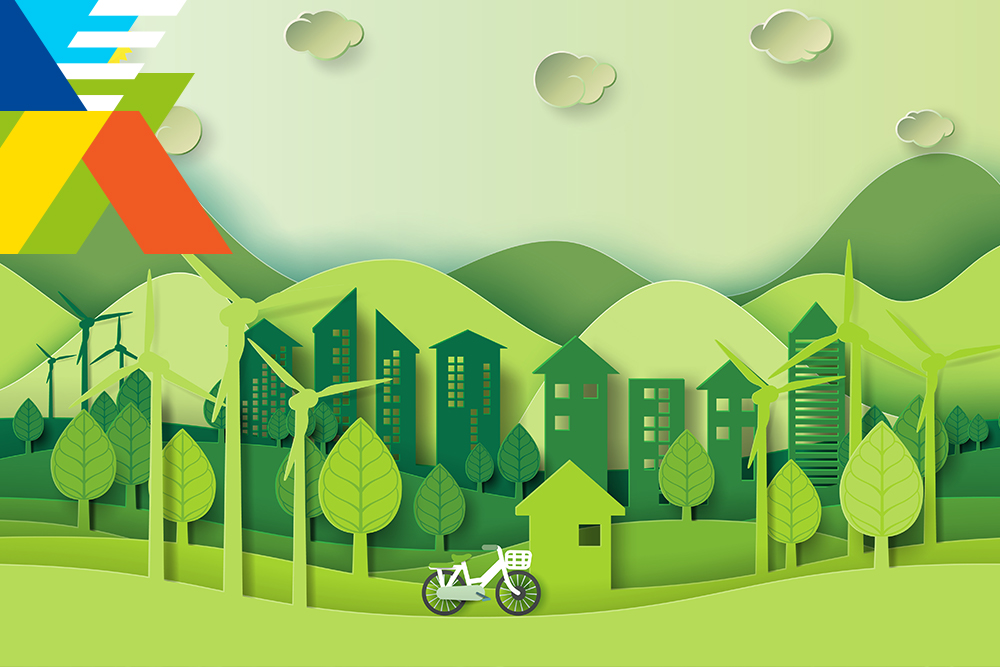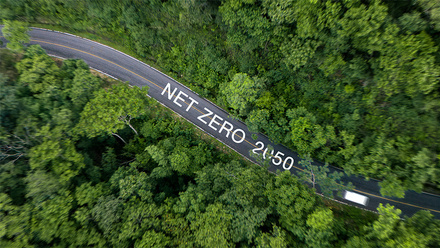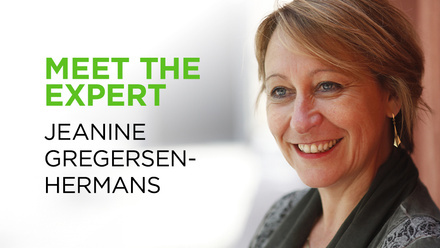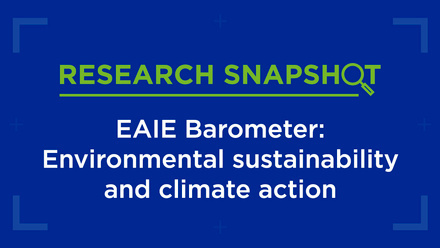The SDGs: our new north star

In the year 2020, the United Nations 2030 Agenda no longer needs introduction. Almost five years after its approval, nearly everyone knows about its 17 Sustainable Development Goals (SDGs) and the challenges therein, including ending poverty in the world; fighting against the climate emergency; fostering inclusive, equal and quality education systems; achieving full employment with decent work for all; achieving gender equality; and fostering renewable energy and the circular economy.
The 2030 Agenda contains some undeniable strengths, but at the same time a host of weaknesses make it vulnerable and call it into question in fundamental ways. These characteristics of the Agenda are now more starkly apparent than ever, as the world in 2020 faces an extraordinary combination of crises in the face of the COVID-19 pandemic, and strong calls are coming from around the world for more careful consideration of social equity.
The 2030 Agenda: Strengths and weaknesses in a changing world
The 2030 Agenda’s greatest strength, in my opinion, is precisely the enormous impact it has had throughout the world and, above all, the degree of commitment and hope that it has aroused. This may seem to be a minor detail, but it is not. In an era of social, economic, political and technological change, as well as major local and global challenges, the 2030 Agenda is a source of hope and expectation that is generating action everywhere. Governments, institutions and companies around the world are taking on board the SDGs because they create hope and a shared roadmap through the ocean of doubt and crisis all around us.
The SDGs are also admirable for their perspective and orientation: they articulate a multi-faceted vision that is simultaneously holistic (highlighting the interconnection of problems and the need for coordinated and interconnected answers), global (affecting the whole planet and requiring global approaches), partnership-based (infused with the explicit recognition that no institution/organisation can tackle and solve these problems without cooperating with other actors), and part of the global-local binomial (wherein global challenges very often require local answers). Indeed, these ways of thinking about problem-solving seem extremely well-suited to the complex and fast-moving challenges we face today, whether in the public health sphere or on the social justice front.
At the same time, however, the 2030 Agenda includes a whole series of weaknesses that could render it unviable or at least erode much of its potential. For example, beyond the Agenda itself as approved by the UN, the SDGs are not accompanied by any kind of binding legal agreement. With no capacity for enforcing compliance, the implementation of the SDGs is left in the hands of specific international and multilateral agreements (for example, on matters of trade, employment, the fight against climate change, etc). As such, it is subject to the variable levels of commitment of each of the UN member states and different public, academic, business and other organisations. Similarly, the Agenda lacks specific resources for implementation. Moreover, the SDGs are being advanced at a particular moment in time in which the capacity for action of international institutions is being called into question and multilateralism is also being challenged by a large number of countries. The lack of effective coordination across countries in response to the COVID-19 pandemic presents a stark example of these kinds of unsatisfying multilateral dynamics.
Likewise, the Agenda calls for immediate action (ie addressing urgent challenges) but institutions, businesses and social organisations are burdened with longstanding inertia and are moving slowly, while so-called ‘blocking coalitions’ are powerful in their fight to maintain the status quo. Finally, the SDGs mainly call for global action (at the level of international institutions) and local action (implicating local entities, regions and cities), but the political reality of the world today still largely rests on nation-states, and does not grant enough autonomy or managerial capacity to actors at different levels.
Higher education institutions and the SDGs: crucial synergies
In the face of these dilemmas, the 2030 Agenda provides an excellent opportunity to re-establish the role of higher education institutions in society. The SDGs present a powerful opportunity for universities to engage with society, both globally and locally, and get them to think about how they can help to improve society, by bringing about social, economic and cultural change. In fact, we are at a historic moment when, beyond the 2030 Agenda, higher education institutions are well-positioned to become key players in society. How and why is this possible?
First, higher education institutions are repositories of knowledge and talent, which are key factors for social, cultural and economic progress.
Higher education institutions are repositories of knowledge and talent, which are key factors for social, cultural and economic progress
Secondly, higher education institutions offer space for neutrality, for collaborative work and for inter-institutional dialogue, at a time when co-operation is needed more than ever and in every way. Higher education institutions are also key agents of academic and scientific diplomacy, both powerful tools in an era of change and interdependence.
Third, the university tradition of a dually local and global mission puts it in a strong position, because that is precisely the approach proposed by the 2030 Agenda: advancing science and knowledge for the common good but at the same time addressing and responding to local/regional challenges and demands.
Fourth, education and the transmission of values and attitudes among young people (and increasingly among the entire population under the paradigm of lifelong learning) make higher education institutions a strategic part of the future for new generations.
Finally, and specifically, the international training of thousands and thousands of young people (every day in greater numbers, which are expected to continue to grow exponentially) is vital to this story. International education can enable the development of a globally aware, critically minded and responsible population, and one that is committed to working together for the common good and for the 2030 Agenda. I have often said in this regard that, even if the SDGs are not implemented or if the results are feeble, we will have fully accomplished our goals in the field of (higher) education if we are able to cultivate individuals who are committed to sustainability, solidarity and the common good.
We will have fully accomplished our goals in higher education if we are able to cultivate individuals who are committed to sustainability, solidarity and the common good
GUNi: a meaningful paradigm
In addition to what can be accomplished by individual institutions, university networks also have a powerful role to play in the context of the Sustainable Development Goals. A notable example of the relevance of networks can be seen in the Global University Network for Innovation (GUNi), which I am so very honoured to lead. Founded in 1999, GUNi’s main goal is to facilitate dialogue between higher education institutions and society, making a significant contribution to innovative reforms in higher education policies around the world, with a focus on public service, relevance and social responsibility. This mission, established twenty years ago, is more relevant today than ever before in general terms, but also specifically in relation to responding to the proposals of the 2030 Agenda.
So, it was no surprise that in 2016 GUNi launched a strategic line of work on the issue of higher education and research in relation to the SDGs. Since then, it has held international conferences and seminars, has promoted and participated in research and knowledge transfer projects, and has advanced studies and publications on the SDGs and their implications for the world of higher education and scientific research.
One of the network’s main activities, which today brings together 249 institutions from 80 countries around the world, is the biennial publication of the Higher Education in the World Report series. Notably, the World Report published in 2017 included an in-depth analysis of the social responsibility of universities from the dual local and global perspective. And the latest report, presented in late 2019, analyses the future of the humanities in higher education and the synergies between science, technology and humanities at the beginning of the 21st century.
More than ever before, collaboration between institutions, between countries, between disciplines and between stakeholders is crucial for sustainable progress. In support of these kinds of synergies, GUNi has spent twenty years working to bring higher education more in line with social demands and needs, and we’re looking forward to continuing this work for the next twenty years and beyond.
Our shared challenge
Ultimately, the great virtue of the 2030 Agenda at this time of such major change is that it offers a shared guide for cooperation on a global scale and a common language that focuses on humanity’s biggest challenges. Higher education institutions are playing a strategic role through their training, scientific research and knowledge transfer programmes, and the Agenda indeed offers a unique opportunity to open universities up to society with the aim of building a better, more dignified and more cultured world. Higher education in general and international education in particular have a historic responsibility in this regard.
With the emergence of COVID-19, and the subsequent simultaneous global health and economic crises we face, the 2030 Agenda not only remains fully in place but is becoming more relevant than ever. In this regard, the United Nations published in March 2020 the report Shared responsibility, global solidarity: responding to the socio-economic impacts of COVID-19, which examines how the pandemic represents a turning point that has affected, in most cases in a negative way, each and every one of the SDGs of the 2030 Agenda. The report invites us to strengthen our commitment to the SDGs by conceiving of them as a shared roadmap towards a more sustainable and inclusive future, essential to overcome this crisis and prepare to better face those to come.
The COVID-19 pandemic will take us to a new reality where we will have to rethink many aspects: from the need to change the relationship between people and the environment, to the importance of governance and global leadership, to the urgency to change the prevailing production and consumption models, prioritise investment in research and innovation, ensure the resilience of public health systems, or safeguard fundamental rights. We hope that we can all work together to find the right answers in pursuit of the Sustainable Development Goals.
QUESTIONS FOR DISCUSSION
- What are the main obstacles to the implementation of SDGs at higher education institutions and how can we overcome them? Do different higher education institutions and higher education systems share the same obstacles?
- How can we boost effective partnerships to address the SDGs? What elements should be taken into account when establishing a new partnership with the SDGs in mind?
- In what areas can higher education institutions have the greatest impact in supporting the implementation of the 2030 Agenda, and how?
- The 2030 Agenda gives us a chance to ‘internationalise’ the curriculum, but also highlights the need to ‘localise’ it. How can we integrate those perspectives into one curriculum? What are the major challenges faced when integrating the SDGs into the curriculum and institutional strategies?
- Should higher education institutions be ranked for their SDG performance?






